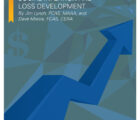Price Optimization and the Descending Confusion
Dear Editor:
Clever titles aside, the only confusion that is descending on the price optimization debate is the confusion over the definition of price optimization sewn by the industry (“Price Optimization and the Descending Confusion,” AR, September/October 2015). In fact, the supposed different definitions boil down to adding price elasticity of demand to the usual ratemaking model. No matter how defined, price optimization always uses non-risk-based factors to move prices away from the risk-based prices, always producing rates that are excessive, inadequate, unfairly discriminatory or all of these.
The major thrust of the industry arguments made in the article is that we should not throw the baby (described as “good” movements away from cost-based prices) out with the bathwater (“bad” movements). The problem is that any move away from cost-based rates produces illegal prices.
The author says that actuaries found that some “individual risk characteristics such as age, occupation and education are reasonable for determining risk.” I disagree. The use of education and occupation is highly questionable since these classes are surrogates for the prohibited classes of income and race. The impact on the poor of these and other anti-poor classes is devastating as Consumer Federation of America’s extensive research on the unaffordability of state-required auto insurance shows.
We can debate all sorts of things about the proper pricing methodologies for insurance products. But we shouldn’t be led into phony debates about definitions while the industry moves to use “innovations” that undermine everything actuarial theory stands for.
— J. Robert Hunter, FCAS, MAAA
Director of Insurance of the Consumer Federation of America and former Federal Insurance Administrator and Texas Insurance Commissioner
AR Editor in Chief Grover Edie replies:
We politely disagree with Mr. Hunter’s characterization of the article. We believe it offers an objective view of this hot-button issue. The Actuarial Review stands by the story.
Dear Editor:
I was very pleased to see the good article about “Price Optimization and the Descending Confusion” . Congratulations to author Annmarie Geddes Baribeau!
Price optimization is the main subject of my paper, “Prices and Commissions Based on the Theory of Games,” published in the June 1966 issue of The Journal of Risk and Insurance. The first contest calculates the optimum price by maximizing the margin expectation. This is done in a way that excludes overhead, profit and sales commission (these items are secured by the second contest, which ends up with a calculated sales attempt quota).
The first contest takes account of competition, control, price elasticity, etc. The emerging optimum prices can be surprisingly low because of the way they are worked. They are really based on a study of human behavior. In my opinion, price optimization is in the public interest. Furthermore, it is very helpful to have formal methodology, which clarifies the mind and dispels that “descending confusion.”
Another item of some interest: The 1966 paper used some work by a relative unknown, John Forbes Nash Jr. Much later, Nash was the subject of A Beautiful Mind and the Oscar-winning movie of the same name. Tragically, he was killed in a taxi accident in May 2015. The 1966 paper is available through Wiley.
—John M. Bragg, ACAS
Correction
Steven Sullivan’s article, “The Mad World of Political Risk Insurance” (AR, September/October 2015), contains an error. In a quote from Lila Rymer of Beazly, NYC, the sentence originally read as follows: “At Beazley, aside from sanctioned countries, we rarely stop considering new deals blanket-close in a country.”
The quote should read: “At Beazley, aside from sanctioned countries, we rarely stop considering new deals in a country.”













